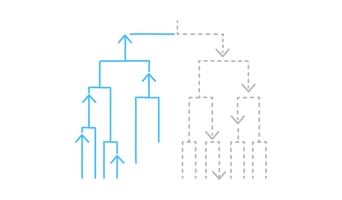When self-managing organizations get rid of boss roles, shared leadership within self-directed teams becomes more important. What are the implications for leadership development planning?
When you talk to people involved in building self-managing organizations (meaning organizations with higher degrees of decentralized authority compared to classical hierarchies), there is one thing where almost everyone agrees on: self-directed teams require more leadership (and leadership development), not less, despite doing away with formal team leader roles.
What is behind this observation and how can you explain the apparent paradox that after dissolving leadership positions, leadership itself becomes more important?
Different understandings of leadership
If you understand leadership as something that a boss or a formal leader has or does then there is indeed a paradox. Because if there is no leader anymore, then there can be no leadership.
If, however, you understand leadership as the social dynamics that emerge from leader-follower relationships, where leaders and followers are different people in different situations, the above observation becomes less surprising.
Self-directed teams dissolve or adapt a key organization design mechanism that is at the core of modern business and organization building: managerial hierarchy, with its unity of command and bosses with authority over subordinates along the chain of command, as embodied in reporting relationships.
This basic mechanism of managerial hierarchy formally puts the “leadership” function into the boss role - and provides the logical focus for expectations of leadership and leadership development. (Dynamic leader-follower relationships will happen nevertheless, but they’ll be more informal.)
If you fire the manager (from that role at least), you take that focus away. If leadership is meant to happen, leaders have to emerge by themselves. Of course, there are many set-ups (e.g., scrum or “tribes & squads” project management roles, the holacratic or sociocratic organizing models, and others) where distributed formal management roles still exist, with specific “management” accountabilities. But those models do not include a single hero-leader who is tasked with motivating and pushing the team forward.
Implications for leadership development
When you are convinced that leadership as a social phenomenon is necessary to take organizations forward, solving non-trivial tasks while dealing with a dynamic and uncertain environment, then you have to work on developing organizational leadership capabilities in such settings.
This has a number of implications, among them:
-
the work on developing organizational leadership capabilities must redefine inherited leadership development program frameworks and interventions, including its priorities with regard to leadership skills.
-
Leadership development plans must be relevant and accessible more broadly and they must be aligned with organizational development.
-
Team coaching gets renewed relevance.
To a certain degree, dissolving traditional hierarchies will empower people in a way that the initiative to lead will emerge by itself to some extent. But this will not be the whole story - leadership development still can make a big difference.



